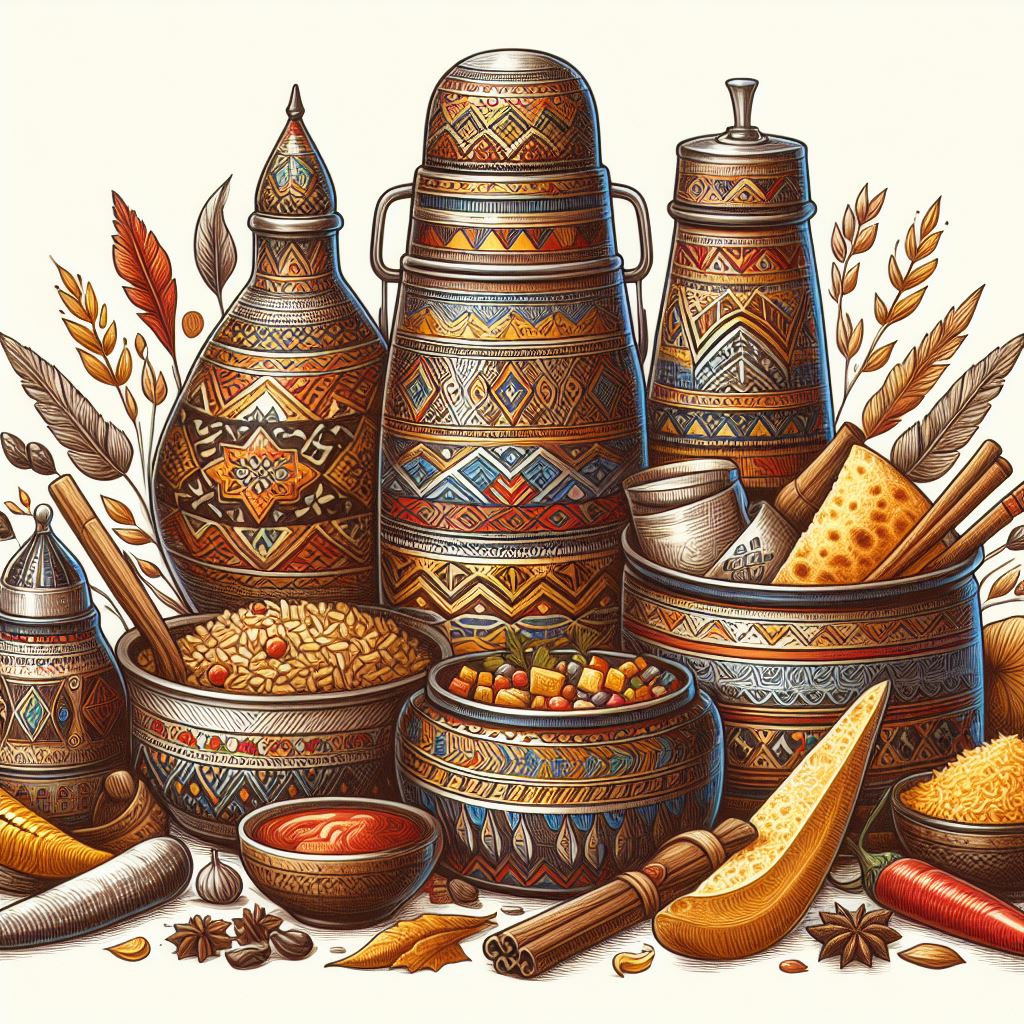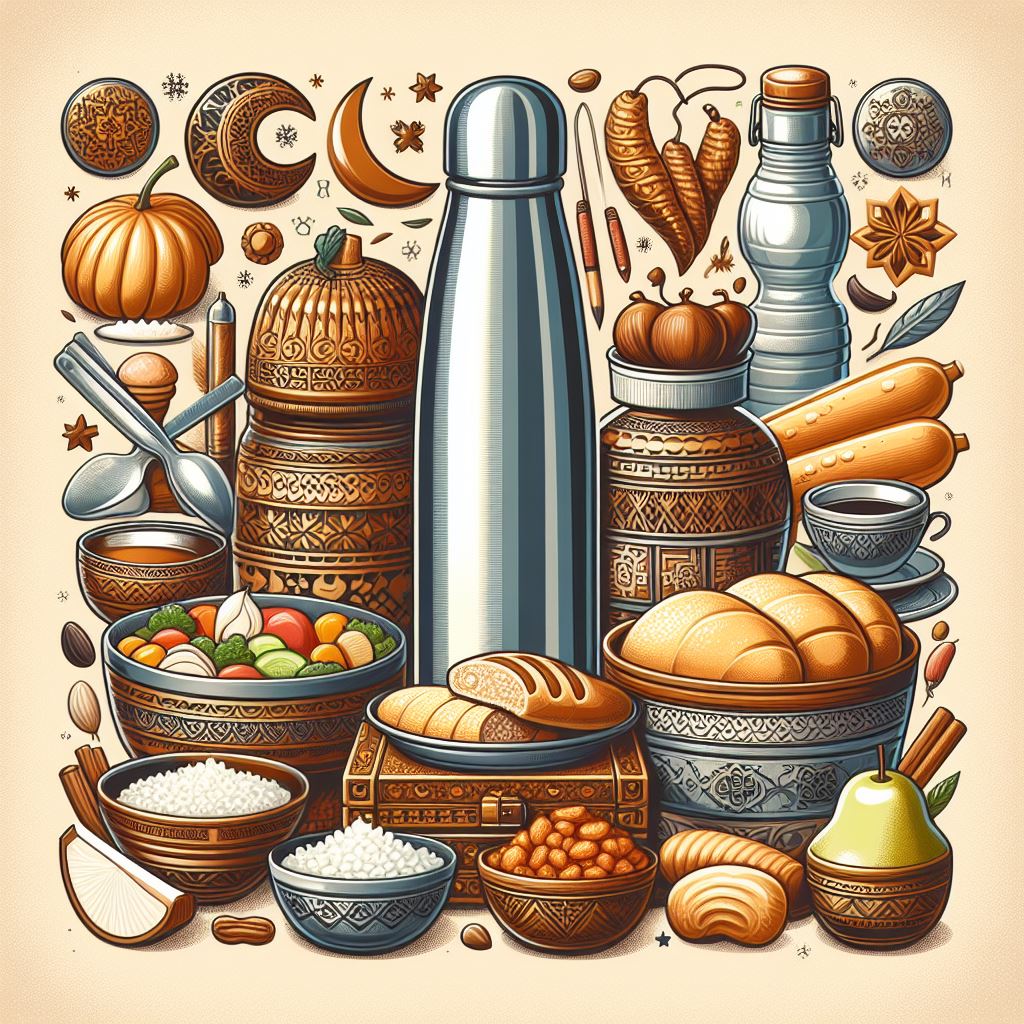Cultural Comforts: Utilizing Food Thermoses in Global Culinary Traditions
In the heart of every culture lies a unique culinary tradition, a testament to the history, environment, and creativity of its people. An unsung hero in the preservation of these culinary practices is the humble food thermos. Across continents and cultures, food thermoses serve not just as containers for carrying meals but as vessels of warmth, comfort, and a slice of home.

Introduction to Food Thermoses in Cultural Practices
The food thermos, a simple yet revolutionary invention, has found its place in the daily lives of people around the world. Its primary function is to keep food warm (or cold), but its role extends far beyond just preserving the temperature. Food thermoses represent a bridge between the comfort of home-cooked meals and the demands of modern life. They enable the transport of cultural culinary traditions from the kitchen to the workplace or school, maintaining the integrity and flavor of dishes that have been passed down through generations.
The Significance of Food Thermoses in Preserving Culinary Heritage
The integration of food thermoses into culinary traditions is not merely a matter of convenience; it is a testament to the importance of food in cultural identity and heritage. In many cultures,
meals are more than just sustenance; they are an expression of love, community, and tradition. Food thermoses help preserve these values by enabling individuals to carry a piece of their culture with them, regardless of where they are.
A Brief History of Food Thermoses Worldwide
The invention of the vacuum flask by Sir James Dewar in 1892 marked the beginning of the food thermos as we know it today. Initially used in scientific labs, the practical application of maintaining temperature for long periods caught the eye of the wider public, leading to the commercial production of food thermoses. Over the decades, this simple invention has been embraced by numerous cultures around the world, each adapting it to their unique dietary habits and social customs.
Cultural Comforts: Japan’s Bento Tradition
In Japan, the bento box is a quintessential part of the daily routine, carefully prepared by millions to provide a balanced, visually appealing meal. The incorporation of food thermoses into the bento tradition ensures that dishes such as miso soup and rice remain warm until lunchtime, offering a taste of home while away.
Homemade Meals on the Go: India’s Dabba System
India’s dabba system is a marvel of efficiency and community, where homemade meals are delivered to office workers and students in tiffin carriers, often including thermoses to keep the food warm. This system not only supports local businesses but also strengthens the connection between family and community through the sharing of food.
Embracing the Cold: Outdoor Dining in Scandinavia
Scandinavian countries, known for their cold winters, have a tradition of embracing the outdoors regardless of the weather. Here, food thermoses are essential for picnics and outdoor gatherings, allowing hot, home-cooked meals to be enjoyed in the beauty of nature. This practice highlights the Scandinavian values of resilience and the deep connection to the natural world.
The Universal Role of Food Thermoses in Preserving Flavors and Traditions
Across the globe, the use of food thermoses transcends cultural and geographic boundaries. Whether it’s keeping tea hot in the Middle East or transporting hearty soups in Eastern Europe, the thermos plays a pivotal role in preserving the flavor and warmth of traditional dishes. It serves as a universal symbol of the desire to maintain a tangible link to one’s heritage and home, even in the face of modernization and busy schedules.
Innovations in Thermos Design and Material
As technology advances, so too do the design and functionality of food thermoses. Modern thermoses are lighter, more efficient, and often made from sustainable materials, reflecting growing environmental consciousness. These innovations ensure that the tradition of carrying warm meals can continue in a way that is both convenient and eco-friendly.
Sustainability and Environmental Considerations
The shift towards reusable food containers, including thermoses, is a significant step towards reducing plastic waste and promoting sustainable practices. By choosing durable and eco-friendly thermoses, individuals can minimize their environmental impact while still enjoying the benefits of warm, home-cooked meals.
Food Thermoses as Symbols of Home and Comfort
In a fast-paced world, a warm meal from a food thermos can offer a moment of comfort and connection to one’s roots. For many, it’s a reminder of the care and thoughtfulness that went into preparing the meal, making the food thermos a symbol of love and home.
Future Trends in the Use of Food Thermoses
As we look to the future, the role of food thermoses in cultural traditions is likely to evolve but not diminish. With a growing emphasis on sustainability, health, and the preservation of cultural heritage, the food thermos remains a relevant and cherished part of culinary practices around the world.
Conclusion: The Unifying Thread of Food Thermoses in Cultural Traditions
The story of food thermoses is a testament to their versatility, durability, and the deep-seated human desire to connect with our cultural roots through food. As we navigate the complexities of modern life, these simple containers serve as a reminder of the warmth, comfort, and tradition that food can bring into our lives, bridging the gap between past and present, home and away.

FAQs
- How do food thermoses keep food warm?
- What is the history behind the invention of the food thermos?
- Can food thermoses also keep food cold?
- How are food thermoses used in different cultures?
- What are the environmental benefits of using food thermoses?
- How can one choose a sustainable and efficient food thermos?
Engaging with these questions not only deepens our understanding of the importance of food thermoses in cultural practices but also highlights the innovative ways in which this simple invention continues to enrich our daily lives.

